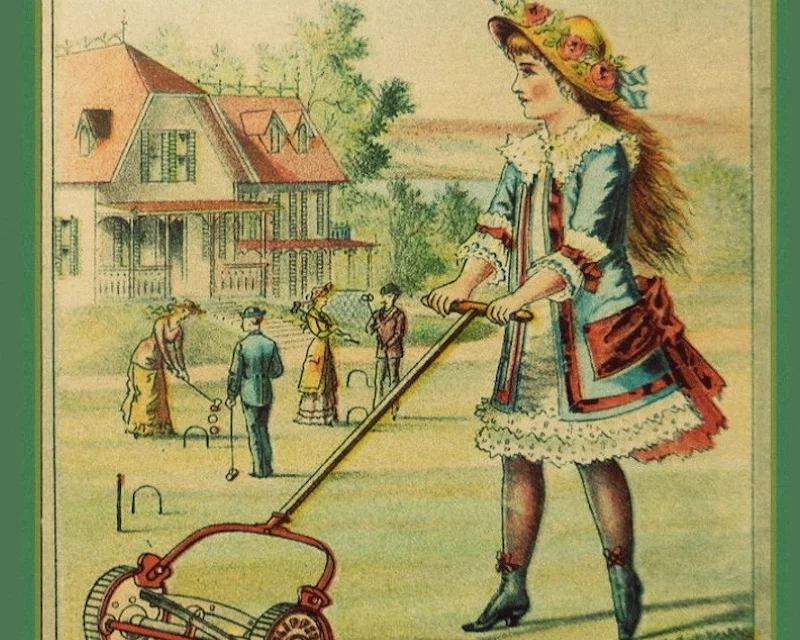 How does my garden grow? Very well, thank you. Most plants seem to have liked that hard freeze in December, especially my roses. One part of my yard that does not look particularly wonderful is my lawn. Mind you, I do not have much lawn. It keeps on getting smaller and smaller as I expand my flowerbeds. It will never look like lawns up north. Nor should it. In reality, turf grass doesn’t do that well down here unless it is on a golf course and nurtured and sprayed with tons of fertilizers pesticides, and herbicides. I would rather have a natural looking yard with pine straw, shrubs, and perennials.
How does my garden grow? Very well, thank you. Most plants seem to have liked that hard freeze in December, especially my roses. One part of my yard that does not look particularly wonderful is my lawn. Mind you, I do not have much lawn. It keeps on getting smaller and smaller as I expand my flowerbeds. It will never look like lawns up north. Nor should it. In reality, turf grass doesn’t do that well down here unless it is on a golf course and nurtured and sprayed with tons of fertilizers pesticides, and herbicides. I would rather have a natural looking yard with pine straw, shrubs, and perennials.
The history of the great American lawn is fairly unique to this country. Turf grass is not native to North America. The earliest settlers had to bring over grass and clover seeds to plant as food for their livestock. Kentucky Blue Grass (Poa pratensis) is native European meadow grass and Creeping Bent (Agrostis stolonifera) is native to Eurasia and North Africa.
If you look at houses from the colonial era, most did not have front lawns at all. They were built close to the street with perhaps a kitchen garden behind the house.
It was only after the Civil War when lawns of turf grass become fashionable thanks to a British invention and an American architect.
With the invention of the lawnmower in England in 1830, a close cut lawn was within the reach of homeowners without hiring a group of men with sickles. In this country an architect named Frederick Jackson Downing (1815-1852) pushed for a distinctively American style of house with a front porch and a front lawn. A neat and tidy yard was thought to show that the owner was a moral and upright person with a proper set of values. After the Civil War, his ideas began to be publicized and replicated. The first patent for a lawnmower in America was granted in 1868.
With the advent of cheaper color printing, advertisements tried to convince the consumer that lawn mowing was a healthy past time for young and old as well as male and female. By the end of the 19th century, grass sports such as football, badminton, croquet, and of course golf became the vogue. This was all the more reason to have a lush green carpet upon which to play. The USGA (United States Golf Association) is credited with pushing the scientific development of fertilizers and herbicides for golf courses. These products were soon adopted by consumers for use on private lawns. Grass became a big business.
What about the rest of the world? Europeans in general think of large lawns as being uniquely American. They do not even refer to having a lawn, but rather a “front garden” and a “back garden.” Beginning in the 1950’s, we seem to have become fixated on our lawns. In Ohio, I had a neighbor who mowed his lawn three times per week and verbally attacked anyone who came near to stepping upon it.
And they never seemed to sit outside to enjoy it. What a waste.
I feel that it is important to think about what purpose a lawn serves. Think about it. Who or what benefits from your lawn? If the look of a green lawn gives you pleasure, that is a good reason to have one. I tend to think more about the ecological advantages or disadvantages of a lawn. Does it benefit wildlife? I don’t have the multitudes of deer around here eating my grass. I have never noticed birds benefiting from my small patch of lawn. Butterflies and bees do not find nourishment from my Empire Zoysia. It sometimes seems to me that the only people deriving benefit from my lawn are my “mow and blow” guys who we pay every week.
Of course, after being very preachy about lawns, do I have one? Yes. Do I like it? Not particularly. I am working up the courage to live up to my convictions and replant the lawn with ornamental native grasses or native plants. The idea and ideal of a perfect lawn is so imbedded in our national being that it is hard to give it up.
In the meantime, I will continue to enlarge the areas with shrubs and flowers, avoid putting chemicals on my lawn, and enjoy that decreasing swath of green.









